14 Calmest Dog Breeds
The calmest dog breeds have an adaptable, gentle temperament and don’t get riled up easily. These pups love to lounge and aren’t known to be big barkers unless they’re alerting you to danger.
But remember that, just like people, every pet is unique with their own personality, so proper socialization and positive reinforcement training are key to helping your pup live their best life and be calm in new situations.
If you’re looking for a laid-back furry friend, check out this list of some of the calmest dog breeds to consider adding to your family.
Calm Dog Breeds
1. Basset Hound
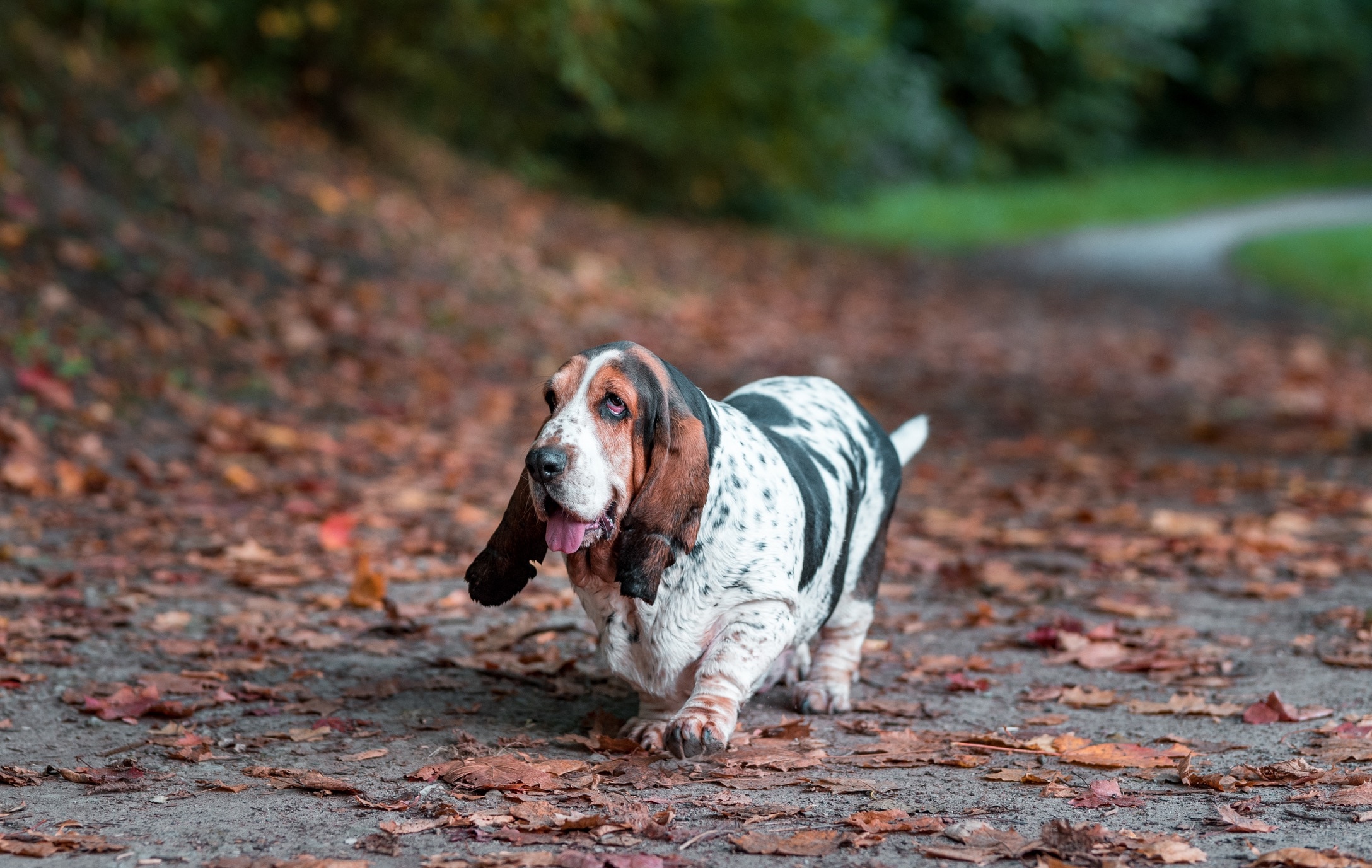
The Basset Hound is a calm, gentle dog breed that’s adaptable to new surroundings and content with moderate exercise. These low-energy dogs aren’t very athletic, so don’t expect them to excel at sports! Their best asset (besides being an amazing companion) is their nose, which can sniff out just about anything. But Bassets do have a booming bark and bay, so this breed may not be your best option if you treasure peace and quiet.
2. Bichon Frise

While every dog needs regular exercise, mental stimulation, and playtime, a Bichon Frise is content to lounge around after these needs have been met. Though they do tend to bark, plenty of positive reinforcement training can help your Bichon learn more desirable behaviors (and have fun doing it). Bichons tend to be super social and love people, so they don’t get too anxious when properly introduced to new friends.
3. Boerboel
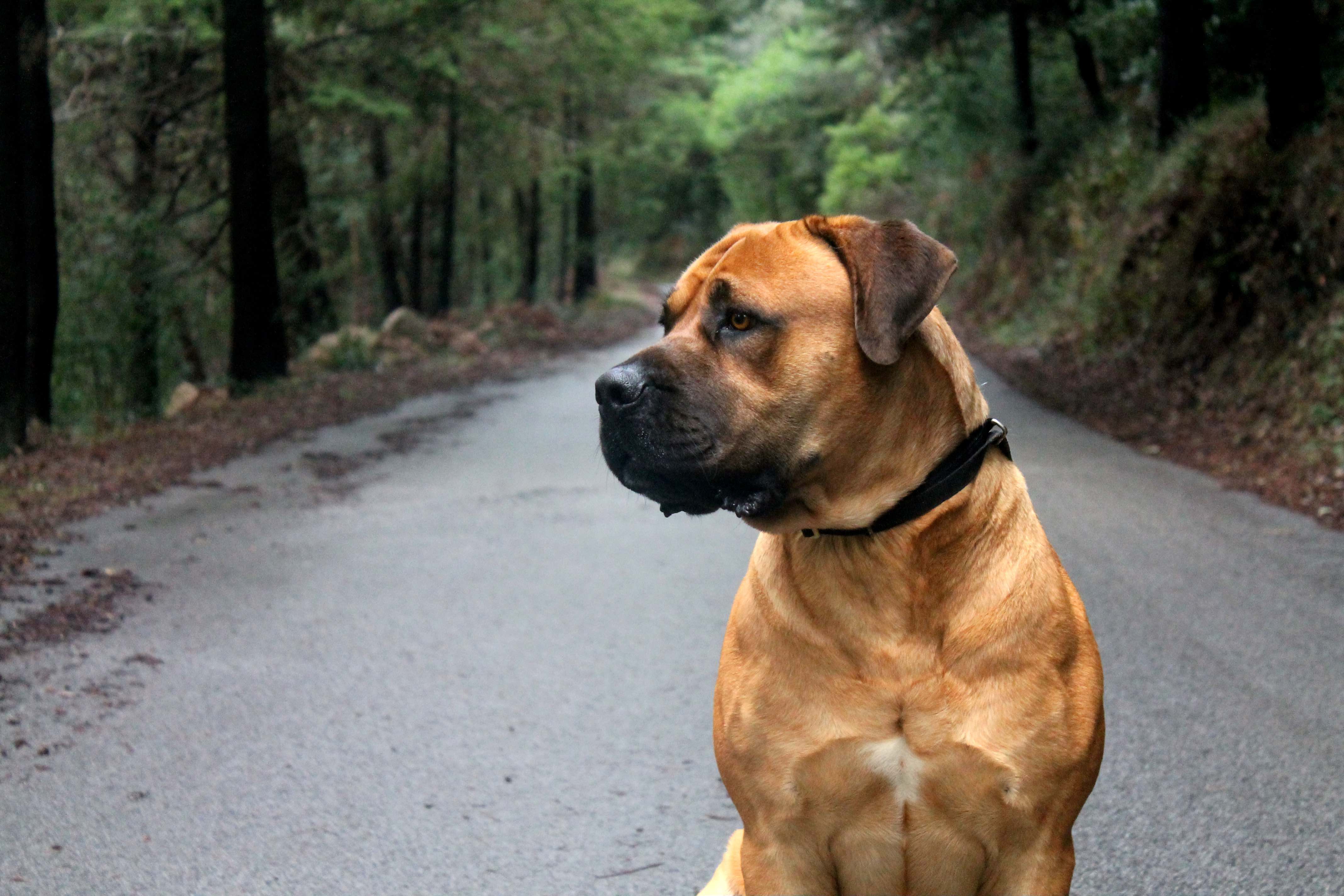
The Boerboel, also called the South African Mastiff, is a docile dog breed that’s enormous in both size and heart. While their calm temperament is great for families, they’re better suited for older kids and adults. Consistent socialization and positive reinforcement training are vital for these pups, as they can be skeptical with new people and pets at first.
4. Cavalier King Charles Spaniel
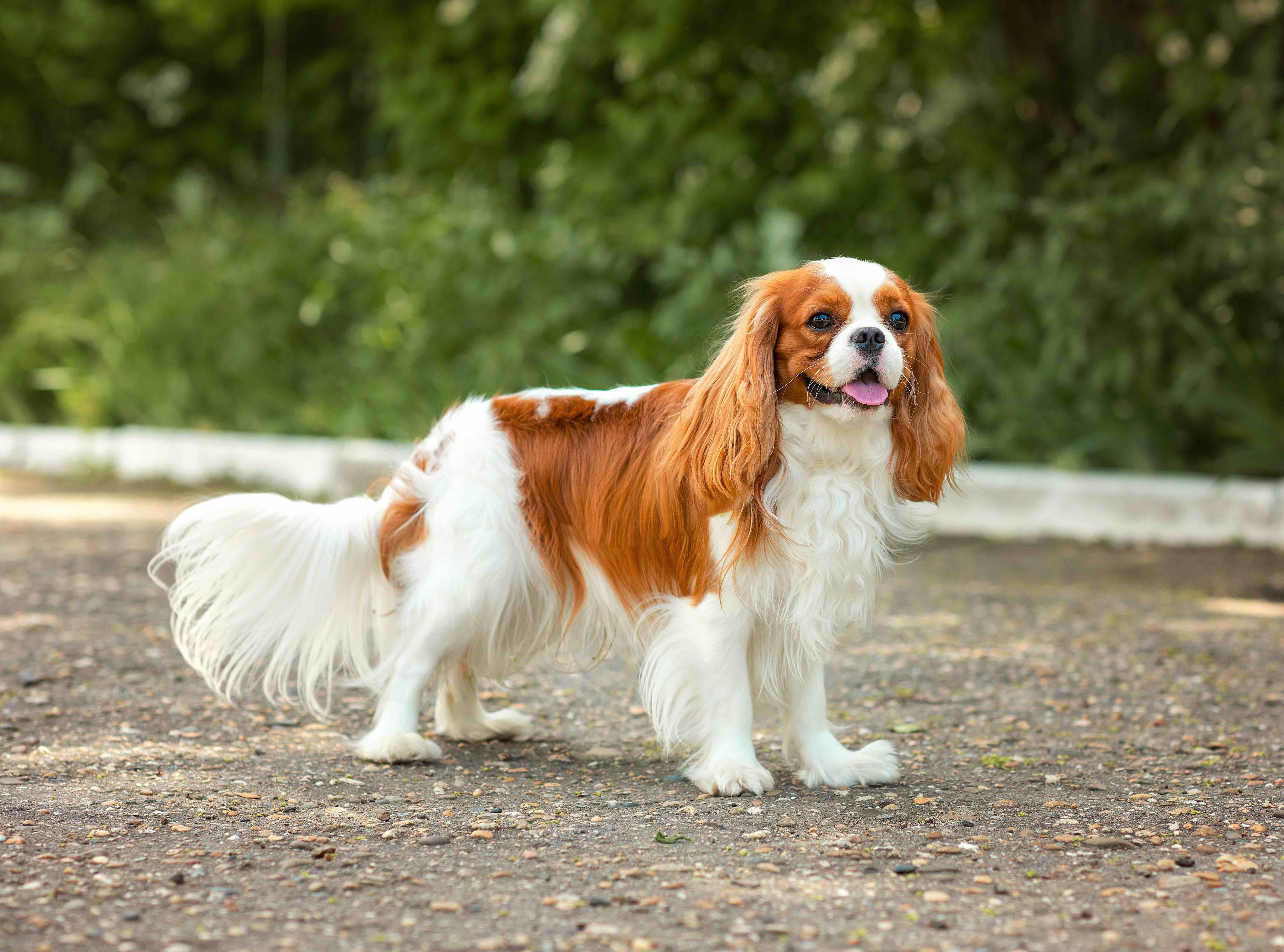
The Cavalier King Charles Spaniel has been a favorite lap dog of British royalty for generations, and the breed’s affinity for laps remains true today. Their sweet, gentle temperament makes these calm, small dogs great for families with kids and other pets, and they are easy to train.
5. Clumber Spaniel
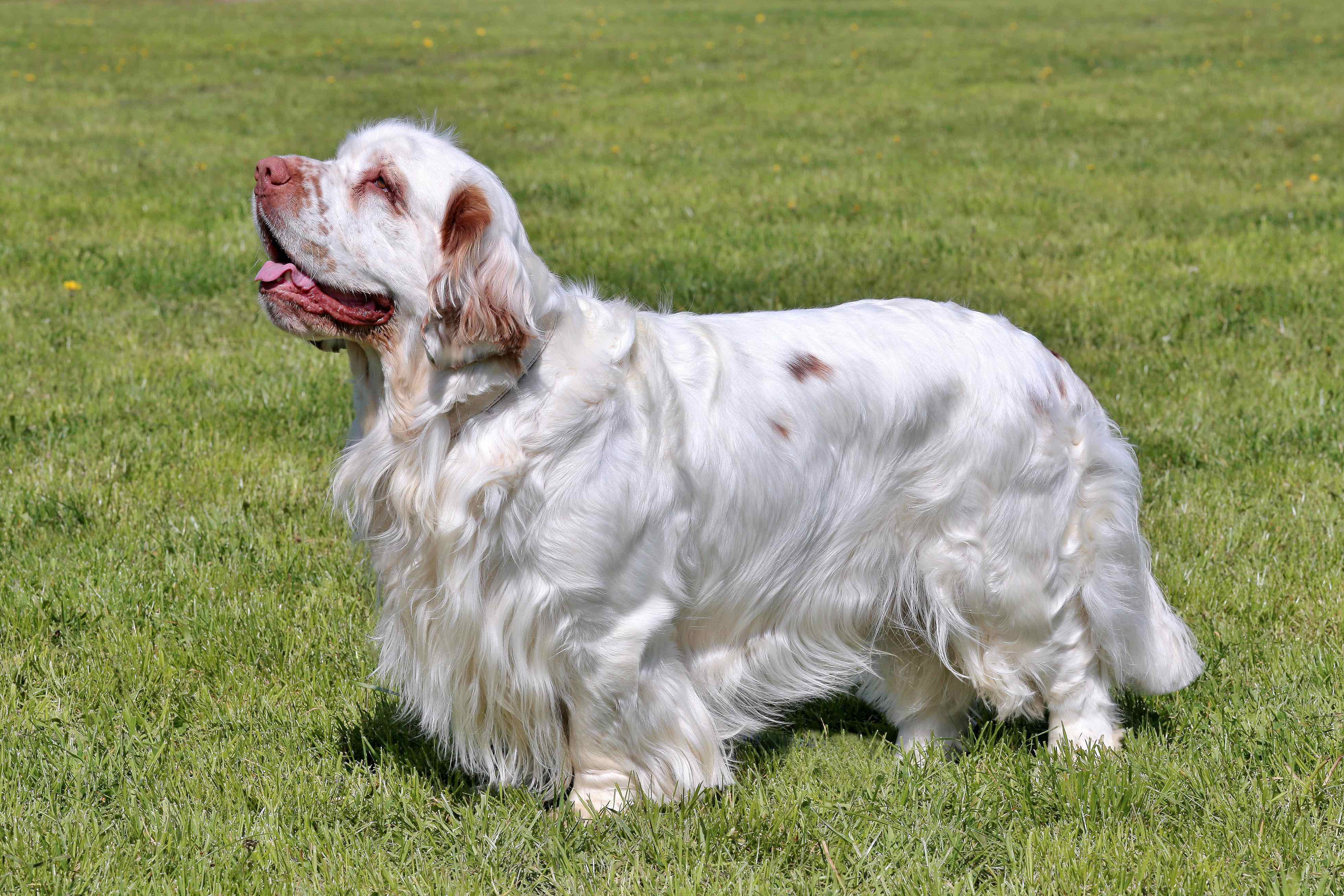
Calm is not necessarily synonymous with couch potato. In the case of the Clumber Spaniel, these hunting dogs need plenty of playtime and exercise, including a long walk each day. Clumber Spaniels make great family pets for active pet parents who love the outdoors just as much as they do.
6. English Bulldog

A well-socialized English Bulldog is generally a calm, low-energy dog. While napping is one of the English Bulldog’s favorite activities, they also need to get outside for a walk and some playtime each day to stay happy and healthy.
Just be careful not to overexert these sensitive pups or expose them to high temperatures. Their brachycephalic (flat) snout makes it harder to breathe and makes them susceptible to overheating.
7. Great Dane
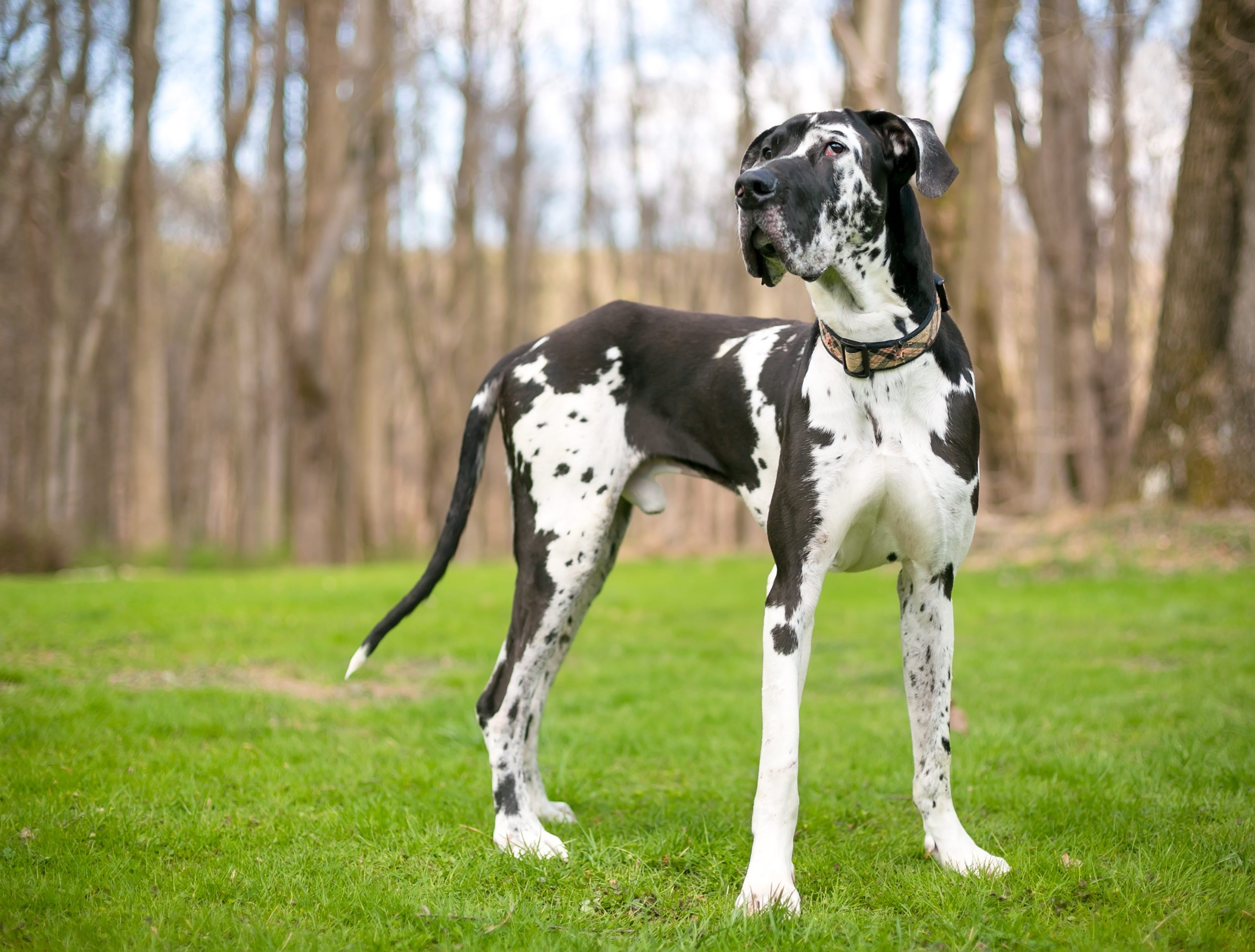
The giant Great Dane is one of the calmest dog breeds. Their gentle, quiet nature makes them good family dogs, but they do need plenty of space to live and play. Great Danes also need long walks regularly, and their calm demeanor helps make that a generally hassle-free process when encountering other dogs and new people.
8. Greyhound
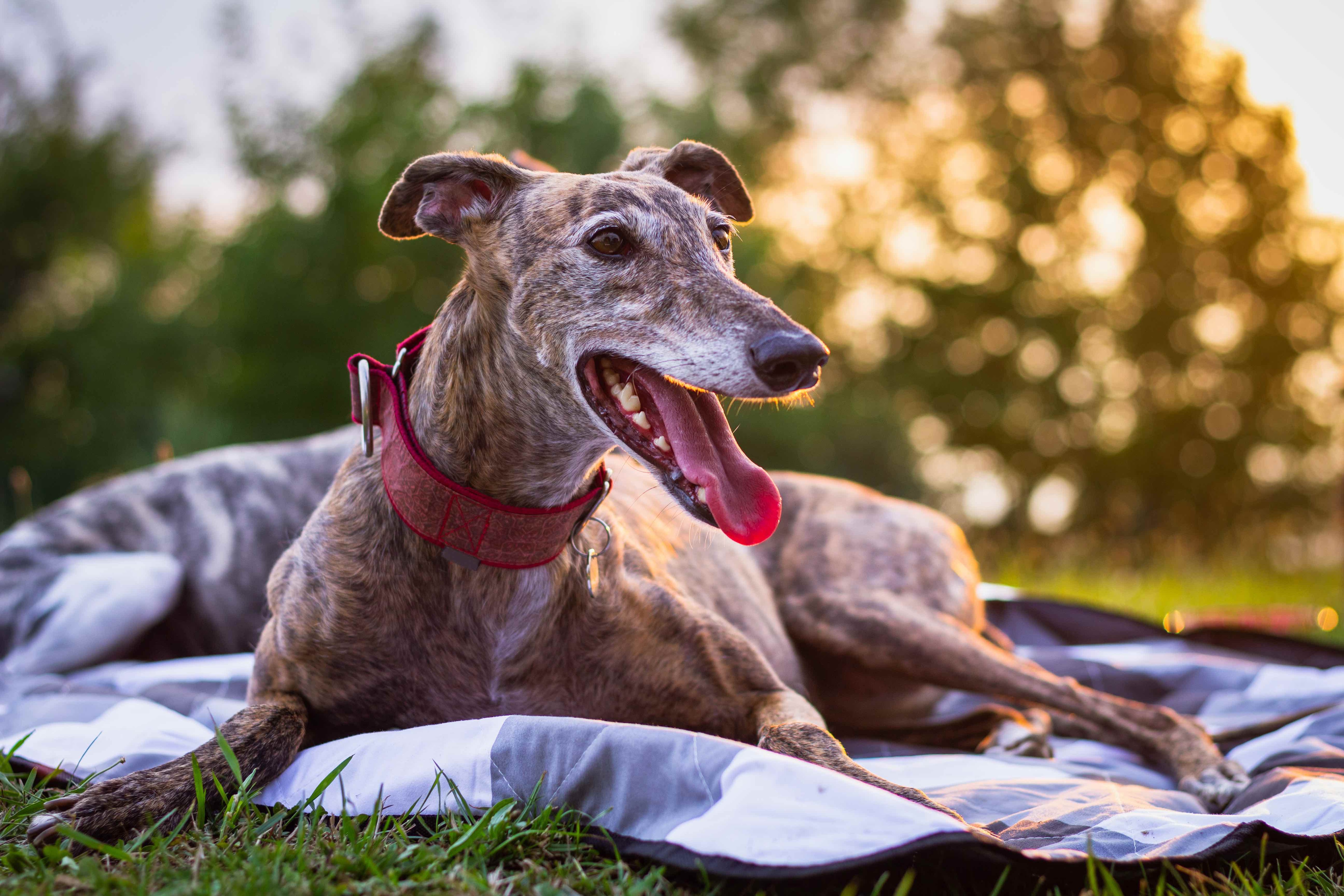
Greyhounds are traditionally known as racing dogs, but that doesn’t mean these sighthounds are a rowdy bunch. The Greyhound Club of America describes them as “even-tempered, quiet dogs that are gentle around people.”
However, be wary of bringing a Greyhound that’s trained to chase into a home with other pets, as it can be challenging to curb their prey drive around cats and other small animals. A fenced yard is ideal for the same reason.
9. Irish Wolfhound
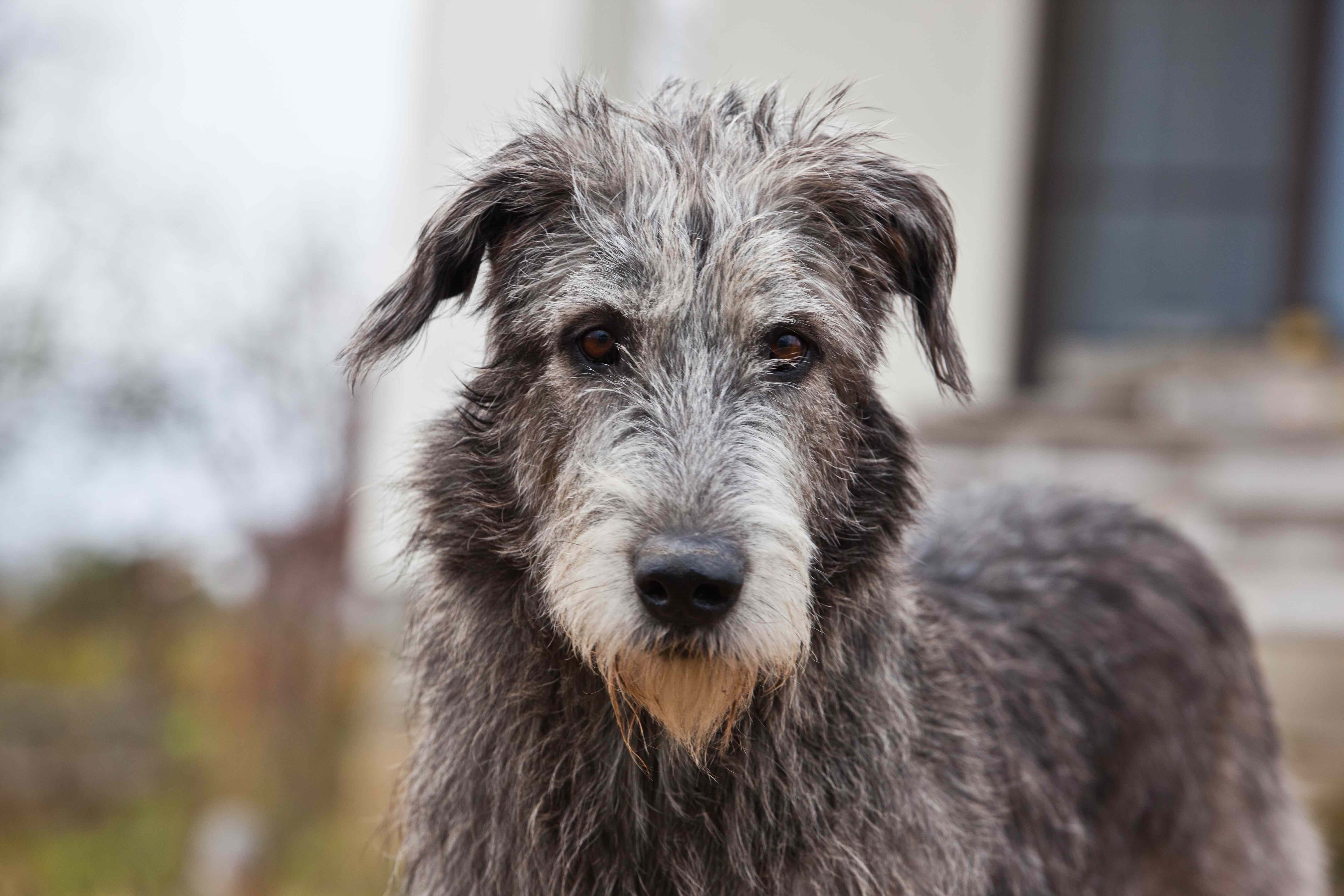
Irish Wolfhounds are giant, calm dogs with a tender, sensitive nature that makes them great therapy dogs. But while they’re gentle in temperament, a body that can reach 130 pounds and 35 inches tall can easily (although accidentally) knock down a small child, so these pups are better suited for families with older kids or adults.
10. Newfoundland
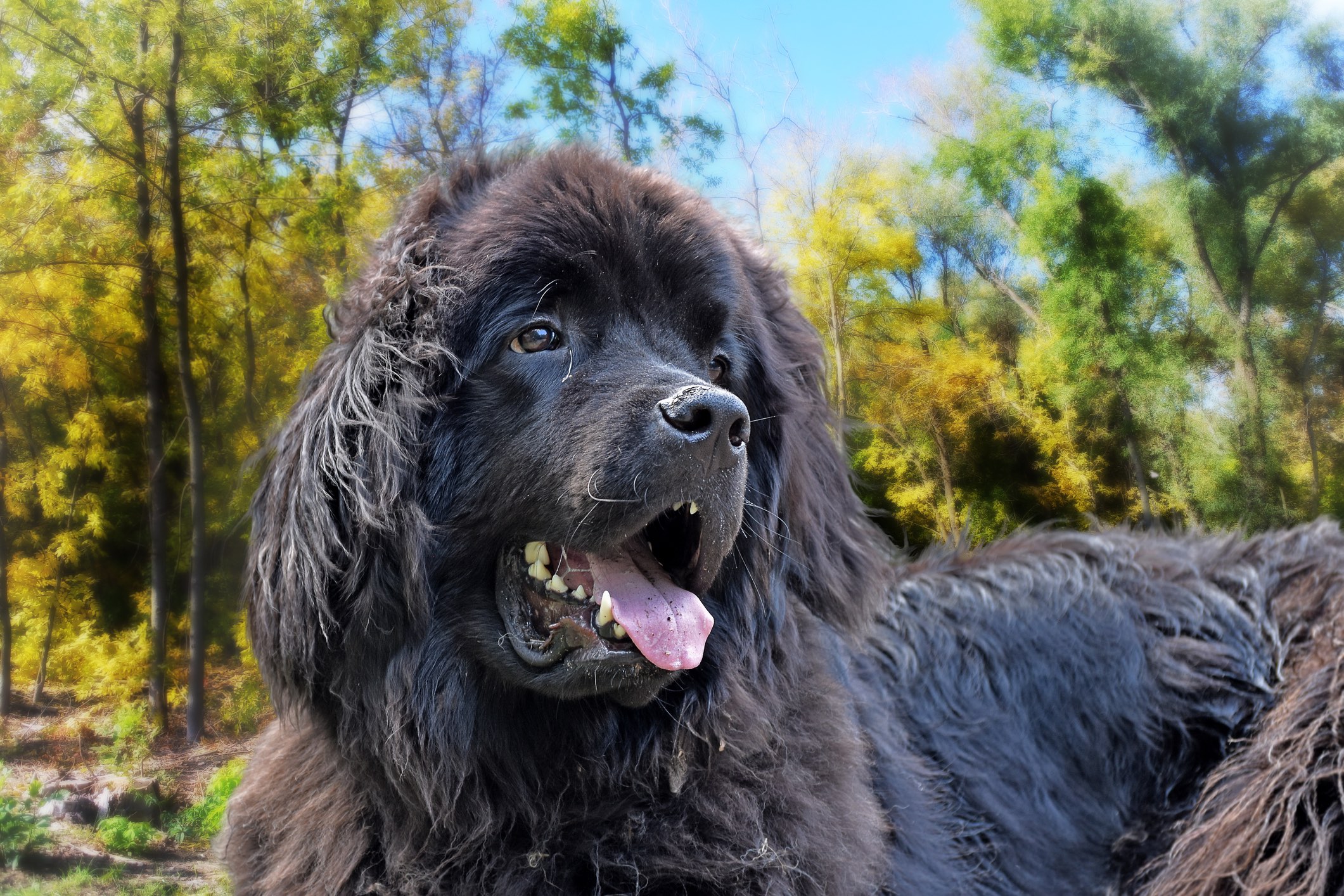
Newfies, as Newfoundlands are affectionately called, are well-known for their sweet temperament and gentle demeanor around children. Their social nature makes training fun, which can help ensure your pup is calm and comfortable in new environments.
11. Pekingese
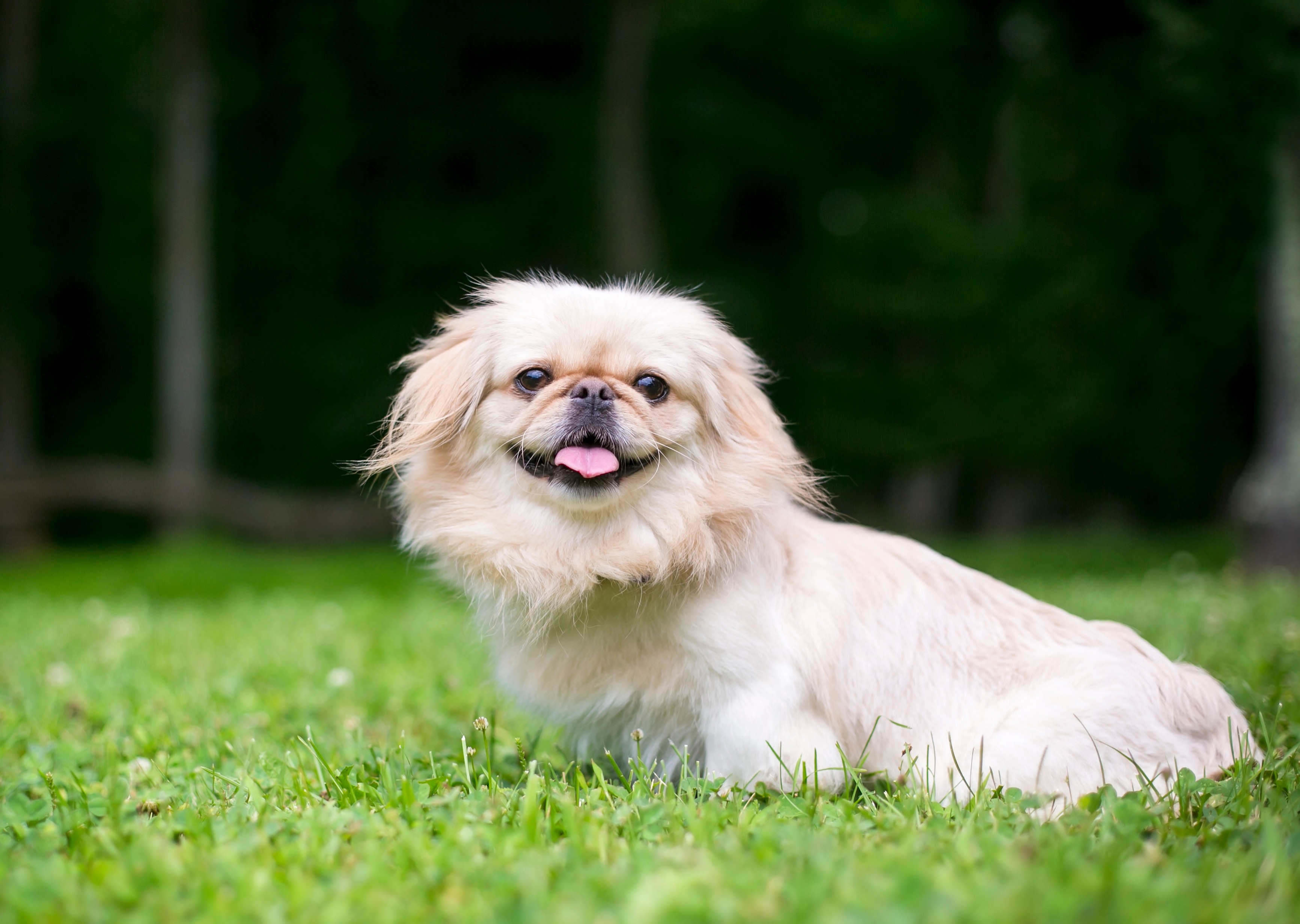
Pekingese pups are the definition of lap dogs. In ancient China, Pekingese were the companions of emperors—and they still love being pampered by their people today. You probably won’t have to worry about excessive jumping with these laid-back pups; just be sure to socialize your puppy so they’re used to different sights and sounds, and regularly reinforce desired behaviors with love and praise.
12. Saint Bernard
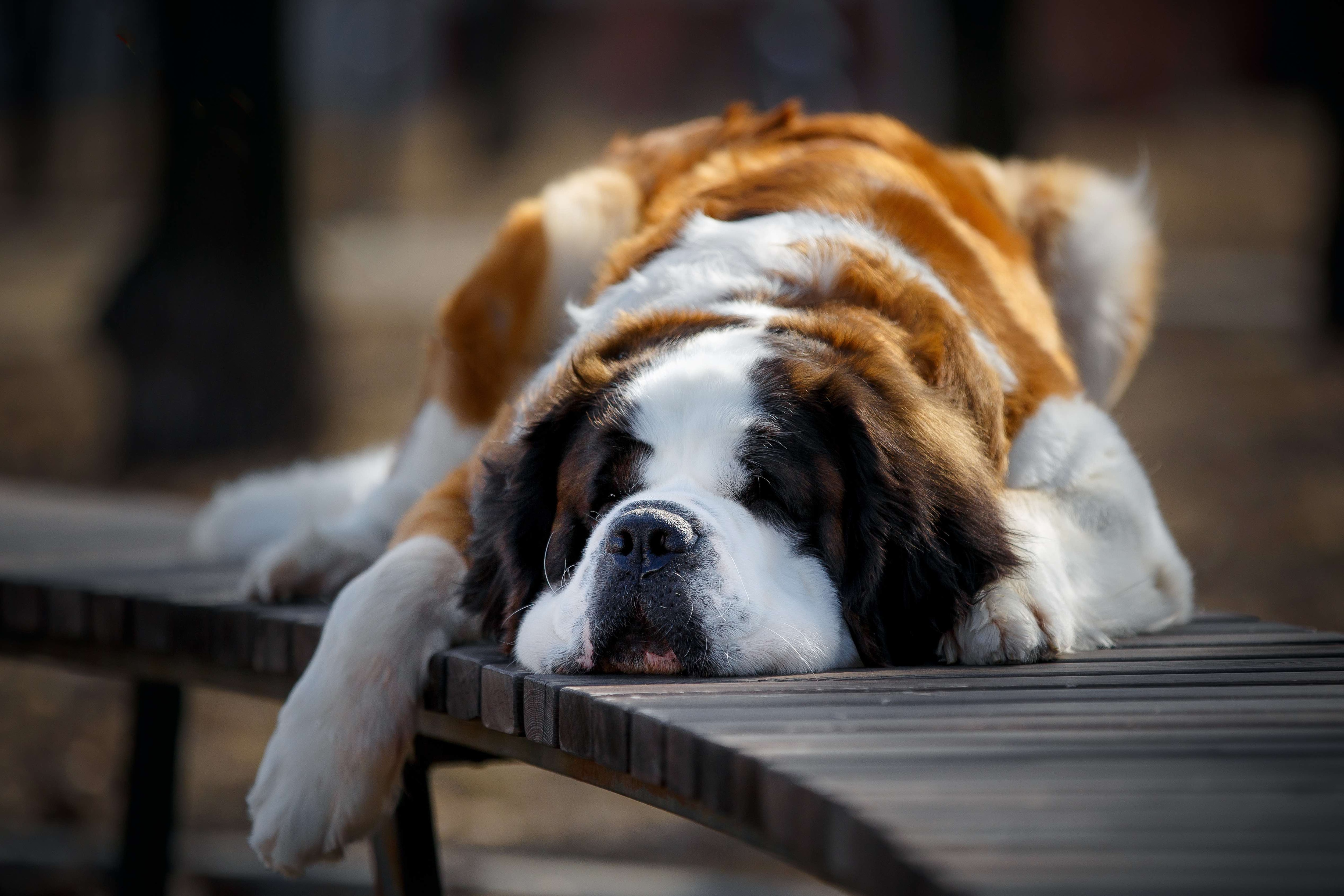
Saint Bernards are one of the very calmest dog breeds—which explains how they stay cool, calm, and collected during the avalanche search-and-rescue missions they’re known for. These chill dogs are often called “nanny dogs” because of their affinity for children.
13. Tibetan Spaniel
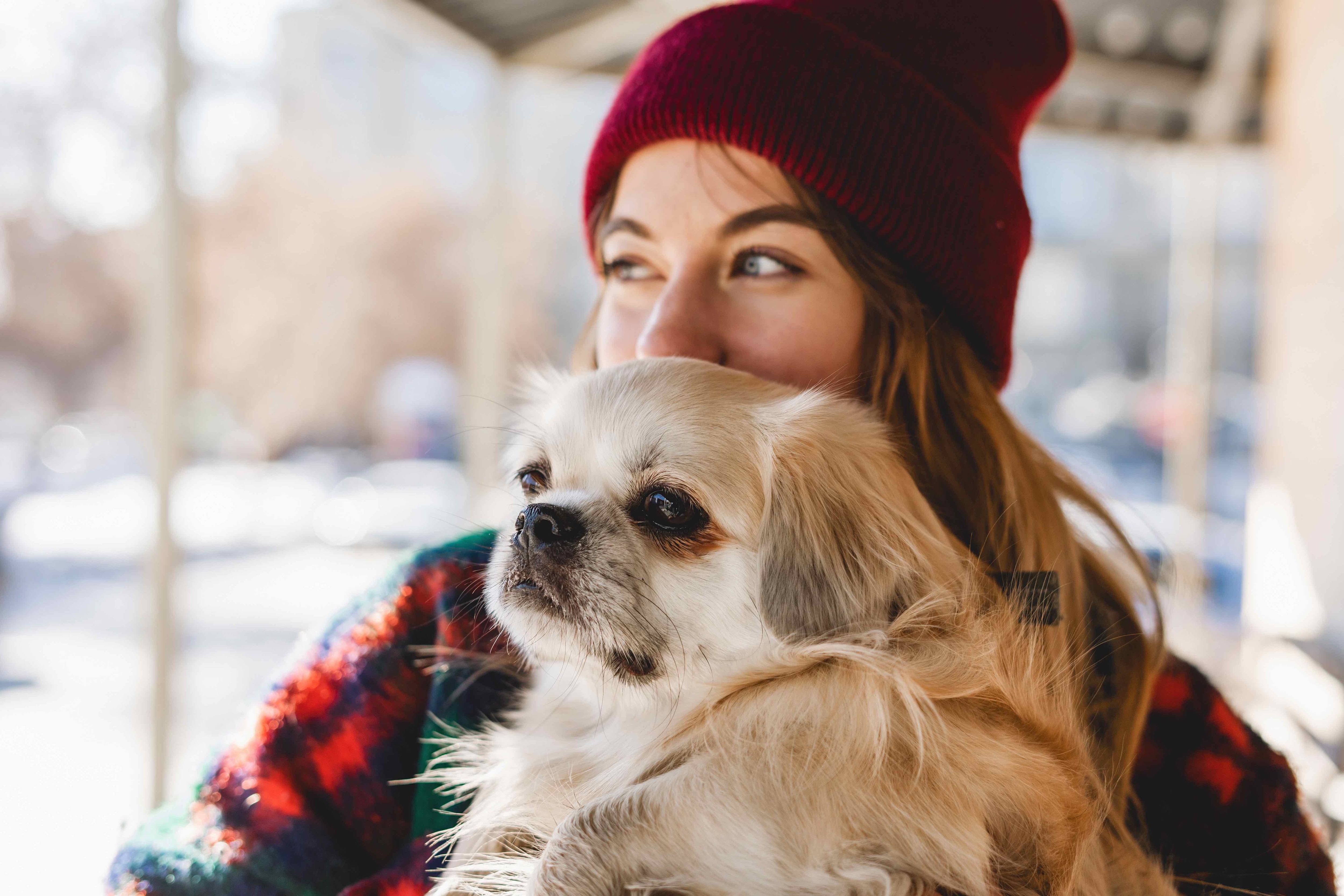
You won’t find a better apartment dog than a Tibetan Spaniel. Known for their happy, playful attitude, the breed makes a devoted companion that loves their humans. Tibetan Spaniels can be unsure around strangers, so it’s vital to facilitate slow, gentle introductions with new people and other pets to keep them calm.
14. Whippet
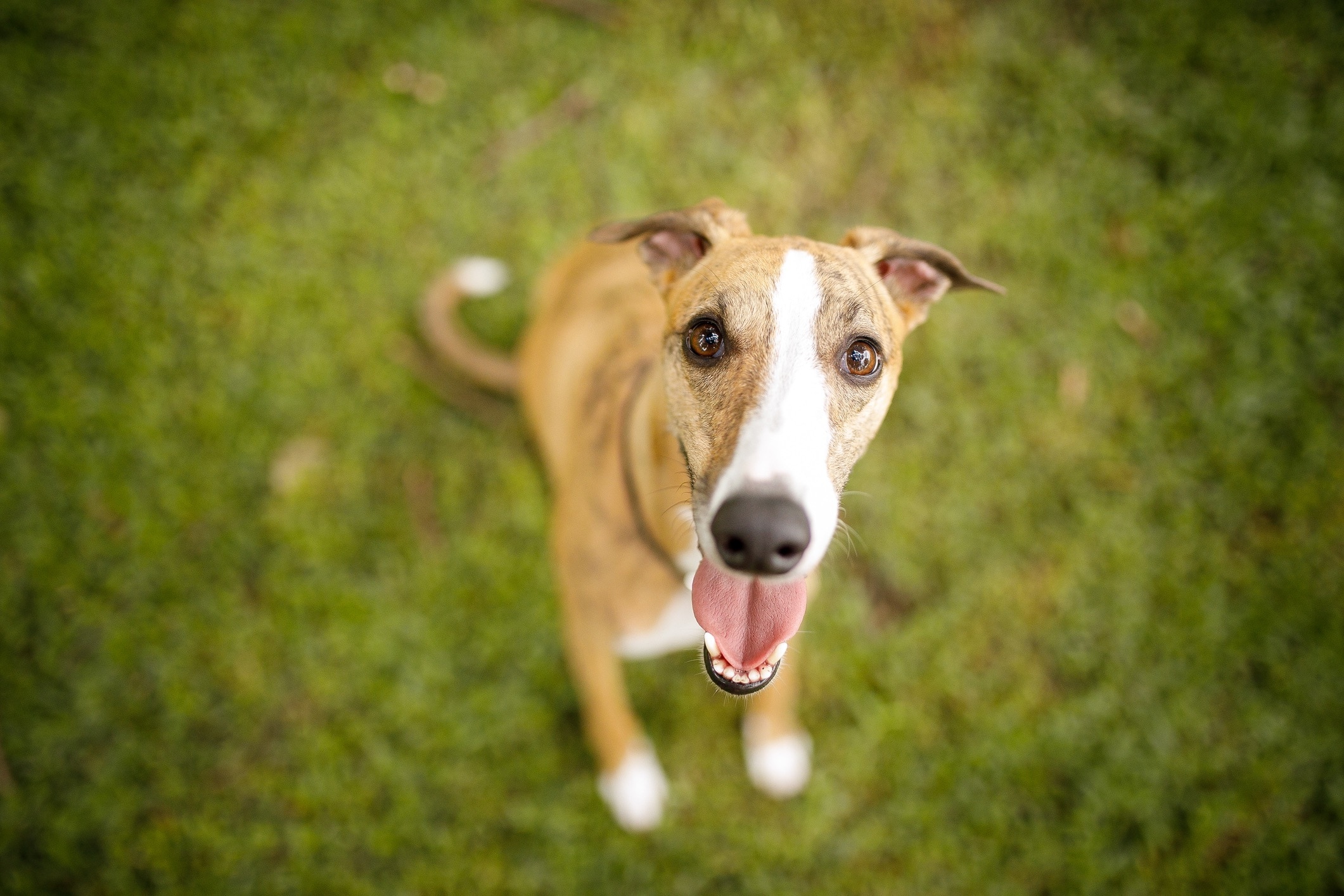
Whippets are fast, but that energy doesn’t last long. If you give them space to expend short bursts of energy exercising, they’re content to lounge around the rest of the time. These sensitive pups love a calm, quiet home as much as you do, so they’re the perfect match for a low-key family without younger children or lots of noise.
How To Help Your Dog Be Calm
Every dog is an individual, meaning there’s no guarantee that a particular dog of a certain breed will have the expected personality and temperament. However, there are certain things pet parents can do to reinforce calm behavior, including:
- Consistently socializing your dog—as a puppy and throughout their life—so they get used to unusual sights and sounds
- Ensuring regular exercise and mental stimulation
- Offering positive reinforcement training to practice repetition of desired behaviors
- Giving your dog love, praise, and attention each day
- Providing a laid-back home environment with minimal stress, noise, and raucous activity
Featured Image: Pekic/E+ via Getty Images
